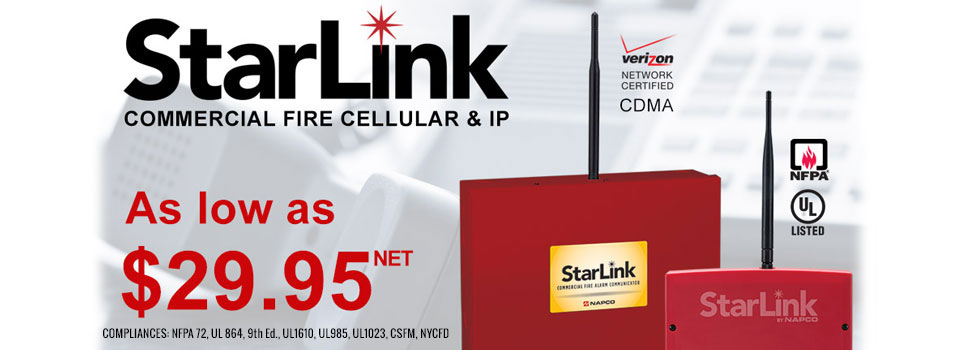
SPONSORED
Alternative Fire Alarm Reporting Communications Solutions for New & Old Systems: Offer Monthly Savings & Meet New NFPA 72 Code
The NFPA 72 (National Fire Alarm Code) is a standard published by the National Fire Protection Association, to provide the latest safety provisions covering the “application, installation, location, performance, inspection, testing, and maintenance of fire alarm systems, supervising station alarm systems, public emergency alarm reporting systems, fire warning equipment and emergency communications systems (ECS), and their components” (nfpa.org).
The code is updated every 3 years in order to make changes and updates to keep up with evolving technology and new research to fire alarm systems. Under the latest 2016 edition requirements for Fire System Monitoring has changed drastically. The three options to keep current for fire system monitoring are two telephone lines requiring special, site specific AHJ approval; a single phone line plus another independent form of communications, or a Sole Path Fire Communicator or Equivalent.
The least popular and most costly, 2 telephone lines is now frowned upon under the current standards. It is permissible providing you get site-by-site approval from your local authorities having jurisdiction (AHJ). The new code mandates a 6-hour test-timer (4 test timers per day), alternating between the two phone lines.
The second choice is a single phone line plus another independent form of communication. This is a standard phone line plus a cellular communicator, long-range radio, or IP communicator. They must meet current supervision/installation requirements listed for your application.
The most popular option is a Sole Path Fire Communicator or equivalent, preferred for its simple installation, lowest cost, and the high level of supervision. Install a listed Performance-based technology, most commonly a Sole Path Communicator. To meet NFPA requirements, make sure you get one with at least 60-minute supervision, and that can be installed without a back-up phone line or IP connection.
Its low-cost upgrade, easy installation and simple activation make Napco’s award-winning StarLink Universal Cellular & IP Fire Alarm Communicators an excellent choice, ensuring life-safety /fire alarm systems, old and new, keep communicating in an emergency. At under $30 with any 2G Trade-up, StarLink Radios replace up to two standard phone landlines traditionally required per fire panel, and save on their associated phone charges per month, and offer the broadest, state-of-the-art CDMA nationwide coverage footprint, and code-compliant full event alarm reporting, to any central station/office you choose. The StarLink Fire Communicator, used as primary or backup communicators, and are an easy to install, field-proven solution—among the most economical and full-featured in their class.
For more information on StarLink Universal Cellular & IP Fire Alarm Communicators visit www.napcosecurity.com/starlink, or call Napco at 800-645-9445.